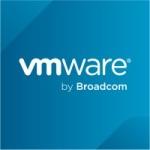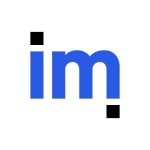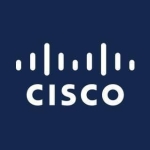What is our primary use case?
70 to 90 percent of the use that we have for the solution is to get virtual machines running. We are also starting to use different aspects of Prism. For example, we just started to deploy their file storage solution. We weren't able to so far (within the last year), because there hasn't been much time to deploy projects on new technologies.
How has it helped my organization?
We do use the capacity planning. If we were to speak about the algorithm side of Nutanix, we use the compression algorithm for the compression that's in the storage and the storage deduplication algorithm. We find them really powerful. The capacity planning is a good algorithm, but it's a pretty simple one. It's just a projection of the expected growth of your cluster, so you can forecast if you need to buy more storage, compute, etc.
The true power of the Nutanix algorithm lies within the storage algorithm: the deduplication, erasure coding, and compression. They are really powerful. We were actually quite surprised, because the experience we had before was only with storage arrays. Basically, when you buy a device that is purely dedicated to storage, you expect it to really perform in that area. That is pretty normal.
When you buy a device, like Nutanix's hyper-converged solution, and it sells you on the fact that it has a really powerful algorithm for storage, you say, "Alright, it's like when you buy something that can do everything, but it's not really doing everything well. It's doing it okay." When we actually started pushing data on the Nutanix service, we saw that the compression was very good. We didn't expect it to be that good. Therefore, the algorithm for the storage side is well-thought-out and works really well.
What is most valuable?
The most valuable feature for us is the way we can use it with virtual machine to spin them. It is lightning fast compared to what we had before. The day-to-day tasks on a virtual machine are really fast. We have the economy of not having too much complexity in the menu and design of the solution, and information is accessible pretty quick. The best feature is really how simple it is to interact with virtual machines.
The Prism features on the backup side have made it so much easier. Now, when we want to backup our VMs and do a cross data center backup, we utilize two clusters located in two data centers in Paris. For each virtual machine that is running, we have what they call a protection domain, which takes a snapshot of the VM and sends it to the other cluster. In the event of a cluster failure on one of the data centers, we can just press one button in another data center on another cluster in Prism. This will spin the VMs that have been backed up from the primary data center to the secondary one and make them run. It is a one-button recovery plan, which is pretty amazing.
What needs improvement?
There are a lot of features that could be added or, at least, made better.
There are two kinds of Prism.
- Prism Element: Which is what's installed on each cluster and running each cluster individually.
- Prism Central: Which you use to connect to all your Prism Elements, meaning all the clusters. Then, it centralizes your view of your infrastructure. We have found a lot of bugs in the interface. Sometimes, when you do an action, it says to you that it's 100% done. However, in the background, the action is still ongoing, and you have no visual update on how long will it take.
Just this morning, we took an image from Prism Central. That image was installed on one of the clusters. In Prism Central, you have one feature that enables you to place the image on multiple clusters. You just have to select them, and say, "I want my image of my virtual machine to be on all my clusters." So, when I want to spin a VM on an individual cluster, I will find the image. What is happening is that when you use the feature of image placement on Prism Central, you select the clusters on which you want to push the image, then you validate. Once you validate, it says, "Alright, the image update has been done successfully," but in the background, it's actually placing the image. Therefore, you have absolutely nothing visually that tells you whether it will finish soon or last a lot longer. You're just there, sitting and waiting for an update that you have to visually see on the interface by refreshing the interface.
Imagine if you were to copy a file from one directory to another directory, but you have nothing to tell you whether it's ongoing or will take five minutes, ten minutes, or an hour. You just have to wait in the other directory for the file to appear and see that it's copied. This is not down to the functionality. It's down to the design of the user interface.
If you want to convert a virtual machine to an image, you have to do it via command line. Why is there not a button on the Nutanix interface that does this?
For how long have I used the solution?
We have been using it for almost a year.
What do I think about the stability of the solution?
The stability of the Prism solution is another thing that we have found to be a bit of work. For example, the Prism Central and the appliances use 97 percent of the CPU and RAM of the virtual machine. We don't know why. There is a memory leak somewhere that makes it overuse the memory. Nutanix is aware of this. It has been ongoing for a year, and they still haven't fixed it. I just don't get it.
What do I think about the scalability of the solution?
Scaling is easy, rapid, and pretty straightforward. Now, we have two clusters consisting of 16 nodes on each cluster. If we were to extend the cluster, we would just order a new node, rack it, and image it to have the same version of the operating system off the Nutanix cluster. Adding it to the cluster is really straightforward. Then, Nutanix takes care of everything, because it's going to use the node to deduplicate blocks of storage. It's going to use the node to store VMs on the node. The automated services on Nutanix are really good.
There are mainly 20 users utilizing it, with a maximum of 30 users. We have a SysOps team, which does like Level 1 administration, who uses Prism for their day-to-day tasks, e.g. renaming the server, creating a new server, moving a server from one node to another node, or augmenting the capacity of the server to extend the disks, CPU, or RAM. There is also the SRE team, which is the engineering team, and we do the much more complex tasks. For example, when we work on the design of a new solution, we will present storage directly on the VMs. We do tasks that are a little more complicated than the other users.
How are customer service and support?
I have been in touch with Nutanix support. They have been really fantastic. The only thing that is an issue is that we are in Europe, and when we open a ticket in European time, we get a response off-hours from India. If you are in Europe and you open a ticket during European business hours, you should probably get someone from Nutanix in Amsterdam who responds. Sometimes, we open a ticket up at ten o'clock in the morning and get a response on our ticket at five o'clock in the evening from India. How come it wasn't seen by the European teams first? It's a European company with a European headquarters. You have to specifically request for your tickets to be handled in your time zone for someone from Europe to contact you.
Which solution did I use previously and why did I switch?
We are the classical customer. Before, we were using a normal three-tier hosting solution, which consisted of having a stack of storage, a stack of network, and a stack of hypervisors for the compute and memory. We thought it was a burden to maintain, because every time when we had to do updates or security patches, we had three stacks to maintain. Whereas, when we switched to Prism, we benefited from its hyper-converged solution. This meant our time maintaining and keeping the solution up-to-date was divided by a great factor. That brought us to Nutanix.
We originally came from VMware. We also had some Hyper-V also, but we were originally a pure VMware customer for our virtual machines. I have used VMware for far longer than I've been in the IT industry. Nutanix was my first experience other than VMware. It is day and night for me. I would much rather use the Nutanix product line than the VMware one.
There were two factors for moving from VMware to Nutanix.
- We had to renew our infrastructure. It was getting a bit old, so we needed more power in order to also forecast the growth of the company.
- The simplicity of hyper-converged makes it a leader. For example, it's a bit like when you cook in your kitchen and have all the ingredients, then you have to assemble them and cook them. I compare Nutanix to those new machines that came out where you put all your ingredients together and you just press a button, then it cooks it for you. It is really a little bit like that. It is like everything is hyper-converged, so in one block you have your storage, compute, memory, etc. When you want to expand your cluster, e.g., if you want to add more VMs or more storage, then you just buy one block, plug it in, and link it to your cluster. That's it. You don't have anything else to do because it's all automated, where it was a burden before when we were under VMware.
This solution seems like going from a complex, cross-embedded solution to something which is a Next Generation website. The design is very intuitive; it's easy to find information in the different menus and things like that. The user experience is much better compared to other products.
In the gambling industry, you have a lot of regulation from different countries. One of those regulations states that you have to be able to send all the logs of your Prism to a separate server, what we call the syslog server. On Prism Central, this doesn't work. We have opened a case for it, since this is a basic feature nowadays. We spoke to Nutanix, and they said that it will be in future updates. We did an update, following their support, but once we did the update, it wasn't fixed.
Nutanix suffers tiny glitches, when you put them one behind another, make the experience just a pain. However, the main features work well. There is no doubt of that.
How was the initial setup?
The initial setup was straightforward: You receive the servers, you pick up the servers, and you rank them. Once you rank them, you plug them into your network. After that, you plug in your computer, you image the cluster, and deploy the appliances. It was a two-man, two-day job to deploy 32 nodes.
We did a high-level design, a low-level design, and a network design, respectively, then we opened the deployment project. It was pretty classical straightforward. Nutanix was pretty easy. The hardest part of the work was in thinking the design of what you wanted, e.g., how many nodes and clusters. We studied the capacity used by our old VMware infrastructure and forecasted the future growth of the company to integrate in how much Nutanix we were going to buy, how many nodes, and how much compute power. Deploying the actual physical hardware and cluster mechanics was easy. It was really a piece of cake.
When you deploy the cluster, make sure you set up the networking. This is really important. If you don't do it right, you will have to come back to it later, and that could be a pain.
Do the testing extensively before you go to production. We spent two days deploying and one full day just testing that the deployment was correct.
What about the implementation team?
I was involved in the deployment of the clusters. I was in the data center to deploy the servers. I was there when we deployed the Prism appliance. I was involved every step of the way (from A to Z), even in the migration from VMware to Nutanix.
What was our ROI?
The adoption rate is 90 percent. We also have some cloud and SaaS/PaaS services. Otherwise, the whole company sits on Nutanix. Right now, we have nine million users using our application and placing bets. At the highest peak, we can have a rate of thousands of logins a minute on our infrastructure. When there is big games, e.g., Champions League Games.
Imagine that we have a lot of people placing bets or surfing the website for the offer. Our infrastructure has to respond really quickly. For example, if a customer places a bet and the game finishes, we have to pay that bet quickly so the customer is able to replace a new bet for the following game, the day after, or something else. The stability of the infrastructure, its resiliency, and capacity to take in load is really important.
Since we switched to Nutanix, we have had fewer bottlenecks and issues during the big game nights. We are using Nutanix and our infrastructure and rely on it for our business.
We have felt the ROI. We don't spend so much time on administration as we did before Nutanix. Before, it was fastidious to update all our VMware, clusters etc. We had to do that every three months. Right now, in Nutanix, it takes us half a day. It is one person who presses a button and goes onto some other business. Nutanix takes care of the update.
What's my experience with pricing, setup cost, and licensing?
We're not using the Prism Pro solution; we are using Prism Ultimate. We have the highest level of license.
Be careful when you buy Nutanix. You get to choose if you're going with Dell, HPE, or Lenovo. Make sure you choose the right one for your company. The vendor is a critical step.
Don't unlicense your Prism licensing. Pro is the strict minimum for real infrastructure. Go with at least Pro and not with the starter. Ultimate was the best choice for me.
Which other solutions did I evaluate?
We did an evaluation with HyperFlex, which is the Cisco solution. It wasn't good at all. Whereas, Nutanix is sending you a hyper-converged infrastructure, and what you see is, what you get. With HyperFlex, they're selling you the same idea, but once you get is not exactly what you expect. It's blocks that you have to assemble yourself in order to make it a hyperconverged solution, while Nutanix is truly a hyper-converged solution. Nutanix gives you the appliance and server, which you just rack and off you go.
We tried using Nutanix Calm and Karbon for the Kubernetes cluster, but we didn't find them to be as easy to use as we expected. When we heard about Calm, we almost thought that we could do automation at a level that would be similar to Puppet, Chef, or SaltStack. When we looked at the features inside, it wasn't exactly like that. Since what we have to do is pretty complex, doing it under Puppet for the orchestration and things like that, this seemed to us much easier than doing it under Calm.
I think this was because communication was off from the Nutanix side and our understanding was off from our company side. We expected it to be a product that it was not, so we haven't been able to use it. We did try to have a look into Calm, but we haven't found a use case for the product. The use case that we have in the company requires us to direct to another product, which we decided would be Puppet.
What other advice do I have?
We are heading towards a DevOps culture. What will happen is that we're going to head more and more towards hybid datacenters. We might increase our usage of Nutanix.
I would rate it an eight out of 10.
Which deployment model are you using for this solution?
On-premises
Disclosure: PeerSpot contacted the reviewer to collect the review and to validate authenticity. The reviewer was referred by the vendor, but the review is not subject to editing or approval by the vendor.
















